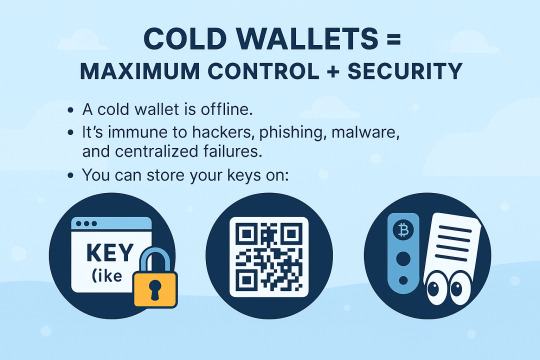#BlockchainSecurity
Explore tagged Tumblr posts
Text
Understanding Blockchain Technology: Beyond Bitcoin

Introduction
Blockchain technology, often synonymous with Bitcoin, is a revolutionary system that has far-reaching implications beyond its initial use in cryptocurrency. While Bitcoin introduced the world to the concept of a decentralized ledger, blockchain's potential extends well beyond digital currencies. This article explores the fundamentals of blockchain technology and delves into its various applications across different industries.
What is Blockchain Technology?
At its core, blockchain is a decentralized, distributed ledger that records transactions across many computers in such a way that the registered transactions cannot be altered retroactively. This ensures transparency and security. Each block in the chain contains a list of transactions, and once a block is completed, it is added to the chain in a linear, chronological order.
Key features of blockchain include:
Transparency: All participants in the network can see the transactions recorded on the blockchain.
Immutability: Once data is recorded on the blockchain, it cannot be altered or deleted.
Security: Transactions are encrypted, and the decentralized nature of blockchain makes it highly secure against hacks and fraud.
Blockchain Beyond Bitcoin
While Bitcoin brought blockchain into the spotlight, other cryptocurrencies like Ethereum and Ripple have expanded its use cases. Ethereum, for example, introduced the concept of smart contracts—self-executing contracts where the terms are directly written into code. These smart contracts enable decentralized applications (DApps) that operate without the need for a central authority.
Applications of Blockchain Technology
Finance:
Decentralized Finance (DeFi): DeFi platforms leverage blockchain to create financial products and services that are open, permissionless, and transparent. These include lending, borrowing, and trading without intermediaries.
Cross-border Payments: Blockchain simplifies and speeds up cross-border transactions while reducing costs and increasing security.
Fraud Reduction: The transparency and immutability of blockchain make it harder for fraud to occur, as all transactions are visible and verifiable.
Supply Chain Management:
Tracking and Transparency: Blockchain provides end-to-end visibility of the supply chain, ensuring that all parties can track the movement and origin of goods.
Reducing Fraud: By recording every transaction, blockchain helps prevent fraud and counterfeiting, ensuring the authenticity of products.
Healthcare:
Secure Data Sharing: Blockchain allows for secure sharing of patient data between healthcare providers while maintaining privacy and consent.
Drug Traceability: Blockchain helps track pharmaceuticals through the supply chain, reducing the risk of counterfeit drugs.
Voting Systems:
Secure Elections: Blockchain can provide a transparent and tamper-proof system for voting, ensuring that each vote is recorded and counted accurately.
Increasing Voter Participation: The security and convenience of blockchain-based voting could lead to higher voter turnout and greater confidence in electoral systems.
Real Estate:
Property Transactions: Blockchain can streamline property transactions by reducing paperwork, ensuring transparency, and preventing fraud.
Record-Keeping: Immutable records of property ownership and transactions enhance security and trust in the real estate market.
Challenges and Limitations
Despite its potential, blockchain technology faces several challenges:
Scalability: The ability of blockchain networks to handle a large number of transactions per second is limited, impacting its adoption in high-volume industries.
Energy Consumption: Blockchain, particularly proof-of-work systems like Bitcoin, requires significant energy, raising concerns about its environmental impact.
Regulatory Challenges: The decentralized and borderless nature of blockchain poses regulatory and legal challenges, as governments and institutions seek to manage and control its use.
The Future of Blockchain Technology
The future of blockchain looks promising, with continuous advancements and innovations. Potential developments include improved scalability solutions like sharding and proof-of-stake consensus mechanisms, which aim to reduce energy consumption and increase transaction speeds. As blockchain technology matures, its adoption across various industries is expected to grow, potentially transforming the way we conduct business, manage data, and interact with digital systems.
Conclusion
Blockchain technology, initially popularized by Bitcoin, holds immense potential beyond cryptocurrencies. Its applications in finance, supply chain management, healthcare, voting, and real estate demonstrate its versatility and transformative power. While challenges remain, ongoing innovations and growing interest in blockchain suggest a future where this technology plays a crucial role in various aspects of our lives.
#blockchain#Bitcoin#blockchaintechnology#cryptocurrency#decentralizedfinance#DeFi#supplychain#healthcare#votingsystems#realestate#blockchainapplications#smartcontracts#DApps#digitalledger#blockchainsecurity#blockchainfuture#blockchainadoption#techinnovation#financial education#financial empowerment#financial experts#finance#digitalcurrency#unplugged financial#globaleconomy
4 notes
·
View notes
Text

💎 Unlock New Heights with MayaVault ! Join MayaVault, the smart AI-powered validator ecosystem that is revolutionizing the world of cryptocurrencies. 📈
Don't miss this opportunity to be a driving force in the crypto revolution!
🚀 Ready to Level Up Your Earnings with MayaVault? Comment Below👇
#MayaVault#blockchainsecurity#empowerthefuture#secureassets#financialfreedom#cryptocommunity#cryptovalidators#blockchain#decentralized finance
3 notes
·
View notes
Link
#blockchainsecurity#cryptocurrency#cybersecurity#digitaltransformation#IBM#NIST#post-quantumcryptography#QuantumComputing
0 notes
Text
How to Use Cryptocurrency Safely? Start with Cold Wallets.

You’ve probably heard: “Not your keys, not your coins.” But what does that really mean?
🔐 If you own cryptocurrency, it’s your job to store it safely. Most people jump straight to exchanges or mobile apps. But if you're holding large amounts — or planning to HODL long-term — hot wallets just aren’t enough.

💡 Cold Wallets = Maximum Control + Security
A cold wallet is offline. It’s immune to hackers, phishing, malware, and centralized failures. You can store your keys on:
An encrypted file (like CryptaBox Keyfile)
A QR code (even printed!)
A hardware wallet or even paper (for the truly paranoid 👀)
🔥 Why should YOU care?
If you're serious about crypto, you need to treat your private key like digital gold. That means keeping it safe, offline, and recoverable.
🚀 Try CryptaBox — a simple cold wallet solution. No registration. No server-side storage. Just your private key — encrypted, backed up, and fully yours.
📽️ Watch this 1-min intro video 📘 Read more in our full guide on Amazon
#cryptocurrency#coldwallet#howtousecryptocurrency#blockchainsecurity#bitcoin#ethereum#cryptotips#walletsafety#cryptostorage
0 notes
Text
Eric Albuja Reveals 5 Tech Trends That Will Transform Travel

Eric Albuja, a leading expert in travel technology, unveils five transformative tech trends shaping the future of travel. From AI-powered personalization to biometric check-ins and blockchain security, these innovations enhance efficiency and sustainability. As the industry evolves, Albuja highlights how smart technology is making travel safer, seamless, and more personalized than ever before.
#EricAlbuja#TravelTech#AIinTravel#SmartTravel#FutureOfTravel#BiometricCheckIn#BlockchainSecurity#SustainableTravel#TechTrends#InnovationInTravel
0 notes
Text

🔐 KoyoFund: Secure & Transparent Crypto Asset Management
💼 Invest with confidence in trusted crypto index funds. 🚀 Join the future of smart investing with KoyoFund!
🌐 koyofund.com
0 notes
Text
Cryptography: The Science of Securing Digital Information

Data security is now a top concern in today's digital environment. Whether it's online banking, social media, or business transactions, protecting sensitive information is essential. Here's when cryptography comes into play. Cryptography is the science of encrypting and decrypting data to ensure that only authorized users can access it. From securing personal messages to safeguarding national security, cryptography has become a fundamental pillar of cybersecurity.
What is Cryptography?
Cryptography involves transforming data into an unreadable format (ciphertext) using encryption techniques. The data can only be converted back into its original form using a special decryption key. This guarantees that hackers will be unable to decode the data even if they manage to intercept it.
With advancements in technology, cryptography has evolved from simple manual ciphers to highly complex mathematical algorithms. Today, it is widely used in securing emails, online banking, cloud storage, and digital signatures.
Types of Cryptography
Symmetric Cryptography: Uses a single key for both encryption and decryption. It is fast but requires secure key-sharing between sender and receiver.
Asymmetric Cryptography: Uses two keys—one public and one private. It is commonly used in secure email communication and digital signatures.
Hash Functions: Converts data into a fixed-length hash value that cannot be reversed. It is used to store passwords and secure blockchains.
The Importance of Cryptography in Cybersecurity
As cyber threats increase, cryptography has become essential in securing sensitive information. Here’s why cryptography is crucial:
Data Privacy: Prevents unauthorized access to critical information.
Authentication: Ensures that only legitimate users have access to data.
Data Integrity: Detects any alterations or tampering in sent data.
Secure Communication: Protects digital interactions from cyber threats.
Cryptography in Online Transactions
Cryptography plays a significant role in securing online transactions. It ensures the safety of financial transactions by encrypting credit card details and personal information. Online banking and digital payments would be extremely vulnerable to fraud if encryption were not used.
In the e-commerce industry, cryptographic techniques such as SSL/TLS encryption secure transactions, protecting users from cyber threats like phishing and identity theft.
Cryptography in Blockchain and Cryptocurrency
Blockchain technology relies heavily on cryptography for security. Digital currencies like Bitcoin and Ethereum use cryptographic hashing and digital signatures to secure transactions. Each transaction is encrypted, making it nearly hard for hackers to alter the data.
Digital signatures verify the authenticity of transactions, ensuring that only the rightful owner can access and transfer digital assets. This makes cryptography a critical element in securing decentralized financial systems.
Building a Career in Cryptography with Professional Training
With the rising demand for cybersecurity experts, cryptography has become a highly sought-after skill. Companies worldwide are looking for professionals who can implement encryption techniques to secure digital assets. Enrolling in Training programs in cryptography can open career opportunities in roles such as:
Cybersecurity Analyst
Cryptographic Engineer
Blockchain Developer
Ethical Hacker
Security Consultant
Learning cryptographic techniques through Training programs provides hands-on experience in encryption, digital security, and hacking prevention. As cyber threats continue to grow, having expertise in cryptography can give professionals a competitive edge.
Conclusion
Cryptography is a critical component of digital security, protecting personal and corporate data from cyber threats. From securing online transactions to ensuring the integrity of blockchain networks, encryption techniques are essential for safeguarding digital assets.
If you're interested in a career in cybersecurity, gaining expertise in cryptography is a smart move. Enroll in a Training program to develop essential skills and stay ahead in this rapidly evolving field. To explore courses and certification programs, visit EasyShiksha.com today!
0 notes
Text
Crypto Criminal Transactions Crossed $40B in 2024: A Deep Dive into the Growing Trend

Analyzing the Surge in Crypto Criminal Transactions: What the $40B Milestone Means for the Industry. In 2024, crypto criminal transactions reached an alarming $40 billion, a significant increase from previous years, according to a report by Chainalysis. This troubling milestone highlights the growing prevalence of illegal activities in the crypto space, including scams, fraud, and ransomware attacks. As criminal activity shifts from Bitcoin to stablecoins, the methods for laundering stolen funds have also evolved, with stablecoins now accounting for 63% of illicit transactions.

Blockchain technology has surely transformed the banking sector by providing unprecedented speed, transparency, and security. However, the same characteristics have made it appealing to bad actors. In fact, in 2021, Bitcoin accounted for 70% of illicit transactions, but stablecoins currently dominate, with an increasing proportion of criminals choosing these assets for their perceived stability and ease of entry into established financial systems. Also Read: pi-network-adoption-surges-as-crypto-eyes-new-heights/ In reaction to the growth in illegal cryptocurrency transactions, regulatory organisations are hurrying to enact new measures to fight the rising problem. Although institutional adoption has helped to reduce the proportion of illicit transactions compared to legitimate activity, the sheer amount of criminal transactions continues to concern regulators, lawmakers, and blockchain companies. According to the Chainalysis analysis, the overall estimated value of cryptocurrency illegal transactions in 2024 may exceed $51.3 billion as more data is collected. This estimate implies that criminals are growing more competent at utilising the cryptocurrency industry for illegal purposes, and the general landscape for illicit transactions is evolving. This tendency represents a huge challenge to the cryptocurrency sector. As decentralised finance (DeFi) expands and more people enter the digital asset arena, there will surely be a continuous battle to keep the financial system secure and transparent. The growth in crypto illicit activities serves as a sharp reminder of the risks involved with digital currencies, and why both individuals and institutions must remain careful in protecting their assets. In conclusion, the $40 billion milestone in crypto illicit transactions serves as a wake-up call for the sector. While blockchain technology offers enormous promise for growth and innovation, it also draws unscrupulous actors, who are increasingly seeking ways to use its characteristics for criminal purposes. As we move forward, it is evident that measures to combat crypto crime will need to be stepped up in order to maintain the crypto space's validity and assure its ongoing expansion. Read the full article
#BlockchainSecurity#Chainalysisreport#CryptoCrime#cryptocriminaltransactions#cryptofraud#CryptoScams#illicitcryptotransactions#RansomwareAttacks#Stablecoins
0 notes
Text
The Beginning of a New Era in Technology: Blockchain Traceability

In a world increasingly reliant on complex supply chains and intricate digital interactions, trust and transparency are paramount. Enter blockchain traceability, a revolutionary application of blockchain technology that's poised to redefine how we track and verify information across industries. This blog explores how blockchain is ushering in a new era of trust and accountability through its powerful traceability capabilities.
From Obscurity to Transparency: The Need for Traceability
Traditional methods of tracking goods and information often involve fragmented systems and opaque processes. This lack of transparency can lead to inefficiencies, fraud, and a lack of accountability. Consumers are increasingly demanding to know the origin of products, the ethical practices involved in their production, and the journey they take to reach their hands. Businesses, too, need reliable tracking to manage their supply chains effectively and prevent counterfeiting.
Blockchain: The Key to Unlocking Traceability
Blockchain technology offers a solution by creating a shared, immutable record of every transaction or event in a supply chain or data flow. Each step is recorded as a "block" linked chronologically to the previous one, forming a secure and transparent chain of custody.
How Blockchain Traceability Works:
Data Capture: Information about a product or asset is captured at each stage of its lifecycle, using sensors, barcodes, RFID tags, or other tracking technologies.
Blockchain Recording: This data is recorded on the blockchain as a transaction, creating a permanent and tamper-proof record.
Shared Ledger: The blockchain is a distributed ledger, meaning that the record is shared among all authorized participants in the network.
Transparency and Verification: Anyone with permission can view the history of the product or asset, verifying its origin, authenticity, and journey.
Key Applications of Blockchain Traceability:
Supply Chain Management: Tracking products from raw materials to finished goods, ensuring authenticity, ethical sourcing, and efficient logistics. This can be applied to food, pharmaceuticals, luxury goods, and many other industries.
Product Provenance: Verifying the origin and authenticity of products, preventing counterfeiting, and building consumer trust.
Healthcare: Tracking pharmaceuticals throughout the supply chain to prevent counterfeiting and ensure patient safety. Managing patient medical records securely and efficiently.
Food Industry: Tracking food products from farm to table, ensuring food safety, and providing consumers with information about the origin and production process.
Manufacturing: Tracking components and parts in complex manufacturing processes, improving quality control and reducing defects.
Logistics and Shipping: Tracking shipments in real-time, improving delivery efficiency, and reducing delays.
Voting Systems: Creating transparent and auditable voting systems, reducing the risk of fraud and manipulation.
Digital Identity: Managing and verifying digital identities securely and efficiently.
Benefits of Blockchain Traceability:
Enhanced Transparency: Provides complete visibility into the movement and history of products or information.
Increased Trust: Builds trust among consumers, businesses, and stakeholders.
Reduced Counterfeiting: Helps prevent the production and distribution of counterfeit goods.
Improved Efficiency: Streamlines supply chain operations and reduces administrative overhead.
Enhanced Accountability: Creates a clear chain of custody and accountability for all participants.
Improved Compliance: Facilitates compliance with regulations and industry standards.
Challenges and Considerations:
Scalability: Blockchain networks need to be able to handle a large volume of transactions to support widespread adoption.
Data Integration: Integrating blockchain with existing systems and data sources can be complex.
Cost: Implementing blockchain traceability solutions can be expensive.
Standardization: Industry-wide standards are needed to ensure interoperability and data consistency.
Xaltius Academy's Blockchain Technology Program:
Interested in learning more about blockchain traceability and its potential to transform industries? Xaltius Academy's Blockchain Technology program provides you with the knowledge and skills you need to understand and implement blockchain solutions. Our comprehensive curriculum covers the fundamentals of blockchain, its diverse applications, and its impact on various sectors. Prepare yourself for the future of traceability with Xaltius Academy.
Conclusion:
Blockchain traceability is ushering in a new era of transparency and trust, empowering businesses and consumers with unprecedented access to information. As the technology matures and adoption increases, we can expect to see even more innovative applications of blockchain traceability across a wide range of industries, transforming the way we interact with the physical and digital world.
#artificial intelligence#technology#online course#ai#blockchain#blockchain technology#blockchainsecurity
0 notes
Text

I am sharing this because under almost every video in youtube, where I am guest of a podcast or I am interviewed, there is a comment like the one explained below, and it is a scam! o_O
🚨 SCAM ALERT! 🚨
If you're browsing a video where I or any crypto/blockchain expert appears, you might stumble upon a comment like this:
💬 "Great video! Just a quick off-topic question: My [cryptocompany name] wallet holds some [ERC20/token name], and I have the seed phrase: alarm fetch churn bridge exercise tape speak race clerk couch crater letter. What's the best way to send them to [exchange name]?"
🎭 Sounds innocent, right? But if you understand how a seed phrase works, and if you're greedy and dishonest, you might think: 💡 “Ah-ha! What an idiot! Let me go swipe those ERC20 tokens!”
You test a few addresses, and BOOM 💥 you find one with actual tokens! You feel like the luckiest bastard alive… but there’s a catch. ❌ There’s no gas in the wallet to move the funds out. So what do you do?
👀 Here’s a full analysis of the age-old trap in action:
🔹 1) The Bait 🎣 The scammer deposits some tokens (like USDC, etc.) into a wallet to make it look juicy. 💰
🔹 2) The Temptation 🧙♂️ They post the wallet’s seed phrase publicly, hoping someone greedy takes the bait.
🔹 3) The Setup 🪤 When you access the wallet, you see the funds… but you can’t move them! 🚫 No gas currency (ETH, SOL, etc.) means no transactions.
🔹 4) The Trap 🪝 Thinking you’re about to hit the jackpot, you send some gas to the wallet so you can cash out.
🔹 5) The Snatch 🐍 💀 GAME OVER! The scammer’s sneaky bot, monitoring the wallet 24/7, instantly sweeps everything—including the bait AND the gas funds you just sent. You lose. 😂
⚠️ Moral of the story: If someone hands you a “free” seed phrase, don’t take the bait! 🚀 These scams rely on greed and ignorance—so be smart and warn others!
🔥 Instead, reply to the scammer message with a warning for others, share this post, and make sure nobody falls for this trap! 🛑
0 notes
Link
0 notes
Text
The Role of Blockchain in Enhancing Cybersecurity and Preventing Data Breaches
As digital transformation accelerates, businesses are increasingly becoming targets of cyberattacks, with data breaches being one of the most significant threats. These breaches often expose sensitive information such as customer data, financial records, and intellectual property, leading to financial losses, reputational damage, and regulatory penalties. In light of these growing threats, businesses must explore new technologies to enhance their cybersecurity defenses.
One such technology making waves in the field of cybersecurity is blockchain. While initially popularized for its use in cryptocurrencies like Bitcoin, blockchain is now being leveraged as a powerful tool for enhancing data security and preventing data breaches. This blog will explore how blockchain can be used to protect sensitive data and improve overall cybersecurity and how Tech4BizSolutions integrates blockchain into its security solutions to safeguard businesses.

What is blockchain technology?
At its core, blockchain is a decentralized and distributed ledger technology that allows data to be securely recorded, stored, and verified across multiple nodes (computers) in a network. Each entry, or "block,” contains a list of transactions and is linked to the previous block, creating an immutable chain. The decentralized nature of blockchain ensures that there is no central point of control, making it highly resistant to cyberattacks and unauthorized tampering.
Blockchain relies on cryptography to secure data, ensuring that only authorized parties can access or modify the information stored on the blockchain. Once data is added to the blockchain, it is extremely difficult to alter, making blockchain an ideal solution for securing transactions and sensitive data.
How Blockchain Enhances Cybersecurity
1. Data Immutability
One of the primary strengths of blockchain in cybersecurity is its immutability. Once a block is added to the blockchain, it cannot be modified or deleted. This characteristic makes it an effective tool for protecting sensitive data from tampering or manipulation by cybercriminals. For instance, in financial transactions or customer records, blockchain ensures that the data remains unaltered, providing a clear and immutable audit trail that can be traced back to the original source.
For businesses, this means that any attempt to alter, delete, or forge transaction records is immediately detectable, as the blockchain network would not accept invalid changes. This significantly reduces the risk of fraud, data tampering, and unauthorized access.
2. Decentralization Reduces Single Points of Failure
Traditional databases and centralized systems store data in a single location, making them vulnerable to hacking and cyberattacks. Blockchain, on the other hand, is a decentralized system, meaning the data is stored across multiple nodes in the network. Each node has a copy of the data, and changes made to the blockchain must be verified by a consensus from multiple nodes before being accepted.
This decentralized nature means that even if one or several nodes are compromised, the data stored on the other nodes remains secure. This greatly reduces the risk of a single point of failure, making blockchain a much more resilient solution compared to traditional centralized systems.
3. Enhanced Authentication and Identity Management
Authentication and identity management are crucial components of cybersecurity. Blockchain’s cryptographic features allow businesses to create secure, decentralized identity management systems that are far less vulnerable to attacks than traditional methods like usernames and passwords.
Through digital signatures and public-private key pairs, blockchain enables secure authentication, ensuring that only authorized users can access sensitive information. Additionally, blockchain-based identity systems allow individuals to have full control over their personal data, granting access only to specific entities or individuals when necessary. This reduces the risk of identity theft, phishing attacks, and unauthorized data access.
4. Smart Contracts for Automated Security Protocols
Smart contracts are self-executing contracts with predefined rules and conditions written into code. These contracts automatically execute when certain conditions are met, ensuring that all parties involved adhere to the agreed-upon terms. In the context of cybersecurity, smart contracts can be used to automate security protocols.
For example, a smart contract can automatically trigger an action, such as encrypting data or blocking access to a system, when suspicious activity is detected. This reduces the risk of human error and ensures that security measures are consistently applied. Additionally, smart contracts can provide an extra layer of transparency, as all actions taken are recorded on the blockchain and can be audited by relevant parties.
5. Transparency and Traceability
Blockchain’s transparency allows for all transactions and data exchanges to be publicly visible on the blockchain (depending on the type of blockchain used). This level of visibility helps businesses track and verify the movement of sensitive data across systems, ensuring that no unauthorized changes have occurred.
In industries such as healthcare, finance, and supply chain management, where data integrity is critical, blockchain offers a reliable way to track and verify data in real-time. With blockchain, businesses can monitor their data flow, detect any anomalies, and respond quickly to potential breaches.
How Tech4BizSolutions Leverages Blockchain for Cybersecurity
At Tech4BizSolutions, we recognize the growing importance of blockchain in enhancing cybersecurity. We offer customized cybersecurity solutions that integrate blockchain technology to provide businesses with a comprehensive defense against emerging cyber threats.
1. Blockchain-Backed Data Protection Solutions
We help businesses implement blockchain technology to secure their sensitive data, ensuring that all critical information — whether it’s customer data, financial transactions, or intellectual property — is safely stored and protected from tampering. Blockchain’s encryption and immutability make it an ideal solution for safeguarding data against unauthorized access or modification.
By incorporating blockchain into our cybersecurity strategy, we ensure that businesses can confidently store and share sensitive information, knowing that it will remain intact and secure.
2. Decentralized Identity and Access Management
We integrate blockchain-based identity management systems to improve user authentication and control access to sensitive data. Through public-private key cryptography and digital certificates, businesses can provide secure, decentralized authentication that is resistant to identity theft and phishing attacks.
With our blockchain-based identity solutions, businesses can ensure that only authorized users can access critical systems, minimizing the risk of unauthorized data access.
3. Smart Contracts for Proactive Security Measures
Our solutions also include the use of smart contracts to automate security protocols. Smart contracts can help ensure that security measures, such as encryption or access restrictions, are automatically triggered based on predefined conditions. This minimizes the risk of human error and ensures that data remains protected at all times.
4. Blockchain for Compliance and Audit Trails
For businesses in highly regulated industries, compliance is a critical concern. Blockchain’s transparency and immutability make it an excellent tool for ensuring compliance with data protection regulations, such as GDPR or HIPAA. With blockchain, businesses can create audit trails that provide a complete history of data access, modifications, and transactions, ensuring full transparency and traceability.
Conclusion
As cyber threats continue to evolve, businesses need to adopt advanced security technologies to protect sensitive data. Blockchain offers a promising solution by providing an immutable, decentralized, and transparent system for safeguarding data. Its ability to enhance authentication, improve identity management, and automate security measures makes it an invaluable tool in the fight against cyberattacks.
At Tech4BizSolutions, we understand the value of blockchain in modern cybersecurity and offer tailored solutions that integrate this powerful technology to protect businesses from emerging threats. By leveraging blockchain, businesses can ensure that their data remains secure, their systems resilient, and their operations compliant with industry regulations.
If you’re looking to enhance your cybersecurity defenses with blockchain technology, contact Tech4BizSolutions today to learn more about how we can help protect your business from evolving cyber threats.
#tech4bizsolutions#CyberSecurity#Blockchain#Tech4BizSolutions#followers#CyberThreats#DataSecurity#DigitalTrust#BlockchainSecurity
0 notes
Text
0 notes
Text
Unlock the potential of blockchain with NectarBits! From healthcare to finance, our innovative custom software solutions ensure security and scalability. Explore more on our website or blog today!
#BlockchainSecurity#SoftwareInnovation#DataProtection#CyberSecurityTrends#TechForTheFuture#technology#security#tech
1 note
·
View note
Text
Blockchain Integration: The Key to Securing Custom Software

In today’s digital era, safeguarding your business's custom software is paramount. Traditional security measures often fail against sophisticated cyber threats. Enter blockchain app development, a revolutionary approach that enhances security and efficiency in custom software systems.
What is Blockchain App Development?
Blockchain app development involves creating applications that leverage blockchain’s decentralized, immutable ledger. Unlike traditional centralized systems, blockchain uses a distributed network of nodes to secure data. Once recorded, data cannot be altered or deleted, ensuring tamper-proof records. Businesses can now hire blockchain developers to integrate this cutting-edge technology into their software systems.
Why Custom Software Needs Blockchain
Custom software, tailored to specific business needs, often introduces unique vulnerabilities. By integrating blockchain technology services, businesses can achieve:
Enhanced Data Security: Decentralized architecture eliminates single points of failure.
Transparency and Traceability: All transactions are recorded on an immutable public ledger, fostering trust.
Efficiency and Cost Reduction: Processes are streamlined through smart contracts, bolstered by Artificial Intelligence for productivity gains.
Regulatory Compliance: Blockchain’s auditable trail ensures adherence to legal standards, reducing fraud risks.
Real-World Applications
HealthcareBlockchain secures sensitive medical data. For instance, MedRec allows patients to control access to their records while offering healthcare providers a comprehensive view of their medical history.
FinanceThe financial sector benefits from blockchain-powered custom software development, enabling secure cross-border payments, fraud detection, and regulatory compliance.
Supply Chain ManagementCompanies like Walmart use blockchain to track goods, enhance transparency, and build customer trust.
AI IntegrationCombining Artificial Intelligence and blockchain enhances fraud detection by authenticating and analyzing data in real time.
Challenges in Blockchain Integration
While promising, blockchain integration has hurdles:
Scalability: Handling large transaction volumes requires robust optimization.
Cost: Initial implementation can be expensive, but long-term gains justify the investment.
Regulatory Hurdles: Compliance with industry-specific laws is crucial.
The Future of Blockchain in Custom Software Development
As blockchain matures, its applications will expand across industries. From AI-driven technologies to advancements in quantum computing, the potential is immense. Gartner predicts blockchain will generate $3.1 trillion in business value by 2025, underscoring its transformative impact.
Conclusion
Integrating blockchain app development with custom software development is no longer optional—it’s essential. Whether in healthcare, finance, or logistics, blockchain offers unparalleled security, transparency, and scalability. By collaborating with skilled developers, businesses can unlock innovation and secure a competitive edge.Read more : Elevating Custom Software Security with Blockchain Technology
1 note
·
View note
Text
Smart Contract Security: Protecting Your Blockchain Transactions!
Smart contracts are revolutionizing blockchain technology, but are they truly secure? 🤔 In this video, we dive into the critical aspects of smart contract security, exploring common vulnerabilities and best practices to keep your assets safe.
🔍 Key topics covered:
✅ What are smart contracts? 🤖
✅ Common security risks (reentrancy, overflow, access control) ⚠️ ✅ Best practices for secure coding 🔐
✅ How to audit smart contracts 🛠️
✅ Real-world examples of hacks & lessons learned
💡 Don't let security flaws put your blockchain investments at risk! Learn how to protect your smart contracts and ensure safe transactions. 🚀 Subscribe for more blockchain insights! 🔔
youtube
#SmartContracts#BlockchainSecurity#Crypto#Ethereum#Web3#CryptoSecurity#DeFi#CyberSecurity#Solidity#Hacking#Audit#Security#NFTs#CryptoHacks#SmartContractAudit#DApps#Blockchain#CryptoInvesting#Tech#Web3Security#Youtube
1 note
·
View note